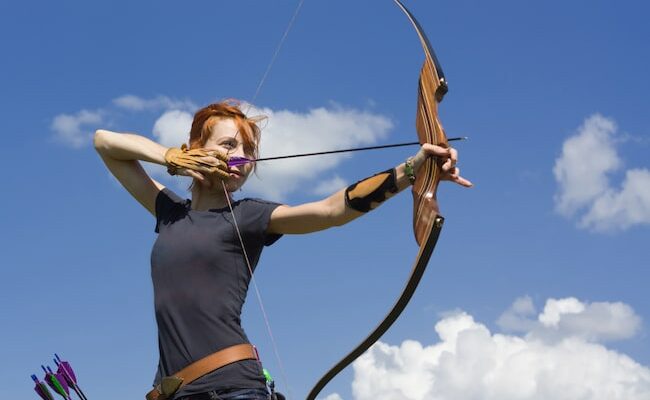Recurve bows have been a popular choice among beginners in the world of archery. These bows feature a distinctive shape that curves away from the archer when unstrung. They offer a balance between simplicity and performance, making them ideal for those starting their archery journey. In this article, we will explore the various aspects of recurve bows, including their parts, how to measure them, stringing techniques, shooting tips, maintenance, and storage. By the end, you’ll have a solid understanding of recurve bows and be ready to embark on your archery adventure.
Catalog
Understanding Recurve Bows :
Let’s familiarize ourselves with the essential parts of a recurve bow. The limbs, riser, string, and arrow rest are key components that work together to create the bow’s functionality.
- The limbs are the flexible parts of the bow that store and release energy when the bowstring is drawn.
- The riser is the central part of the bow where the limbs attach. It provides stability and a place to grip the bow.
- The string connects the two limbs and is crucial for propelling arrows.
Finally, the arrow rest is a small ledge or attachment on the riser that supports the arrow during the shot. Understanding the purpose of each part will help you appreciate how they contribute to the bow’s overall performance. You can also use the rangefinders for bows for efficient results.
How to measure a recurve bow?
Measuring the bow’s draw weight and draw length is essential for finding the right bow that suits your needs. Draw weight refers to the force required to pull the bowstring back to its full draw. It’s crucial to choose a draw weight that you can comfortably handle. Draw length, on the other hand, is the distance from the bowstring to the grip when the bow is fully drawn. Determining your draw length will help ensure proper shooting form and accuracy. Consider seeking guidance from a knowledgeable archery professional or using online resources to measure these values accurately.
Stringing a Recurve Bow
When it comes to stringing a recurve bow, using a stringer is highly recommended. A stringer is a simple tool that ensures a safe and effective stringing process. It consists of two flexible sections with pockets to hold the bow’s limbs securely. By using a stringer, you minimize the risk of damaging your bow or injuring yourself during the stringing process. We recommend following these step-by-step instructions to string your recurve bow properly:
- Place one end of the stringer on the upper limb’s tip, ensuring it is securely seated in the string groove.
- Slide the other end of the stringer over the lower limb’s tip, aligning it with the string groove.
- Stand with your feet shoulder-width apart, and position the bowstringer in front of you with the bow centered.
- Step on the stringer’s center, applying gentle pressure to flex the limbs.
- As the limbs flex, slide the bowstring’s loop onto the bow’s string grooves.
- Carefully step off the stringer, ensuring the bowstring is securely in place.
In case you don’t have a stringer available, we understand that improvisation may be necessary. However, using alternative methods for stringing a recurve bow without a stringer carries a higher risk of damage or injury. We recommend exercising caution and seeking expert advice or assistance in such cases.
Shooting Techniques and Aiming
Now that your bow is properly strung, it’s time to learn about shooting techniques and aiming. Start by adopting the correct stance. Stand with your feet shoulder-width apart, perpendicular to the target, and slightly angled to your dominant side. Position the bow grip in the webbing between your thumb and index finger, ensuring a relaxed and consistent grip. Maintain a straight back and a slightly bent front arm.
Aiming a recurve bow accurately involves aligning three points: the bowstring, your dominant eye, and the target. Close your non-dominant eye and bring the bowstring to your dominant eye’s corner, known as the anchor point. Focus on the target and align the bowstring with the desired aiming point. Consistency in anchor points, hand placement, and focus will contribute to improved accuracy over time.
To enhance your shooting form and consistency, consider the following tips:
- Practice regularly to build strength and muscle memory.
- Focus on smooth and controlled releases.
- Experiment with different anchor points to find what works best for you.
- Seek guidance from experienced archers or take lessons to refine your technique.
Maintenance and Storage
To ensure the longevity of your recurve bow, proper maintenance is essential. One crucial aspect is waxing the bowstring regularly. This simple process helps protect the string from wear and tear caused by friction. Apply a small amount of bowstring wax to the exposed section of the string and rub it in with your fingers. Be sure to cover the entire string surface evenly. Regular waxing will extend the lifespan of your bowstring and maintain optimal performance.
When it comes to storing your recurve bow, consider the following guidelines:
- Store the bow in a dry and cool environment to prevent moisture damage.
- Avoid exposing the bow to extreme temperatures, as this can affect its performance.
- If possible, disassemble the bow for long-term storage to reduce stress on the limbs.
- Invest in a bow case or bag to protect your bow from dust, scratches, and accidental impacts.
Conclusion
In conclusion, we’ve covered the fundamentals of recurve bows, including their parts, measuring techniques, stringing methods, shooting tips, maintenance, and storage. Consider using climbing stand for bow hunting for better results. By following the guidelines presented in this article, you’ll be well-equipped to embark on your archery adventure with confidence. Remember, practice and dedication are key to improving your skills. Embrace the joy of archery and enjoy the exciting world of recurve bows!



